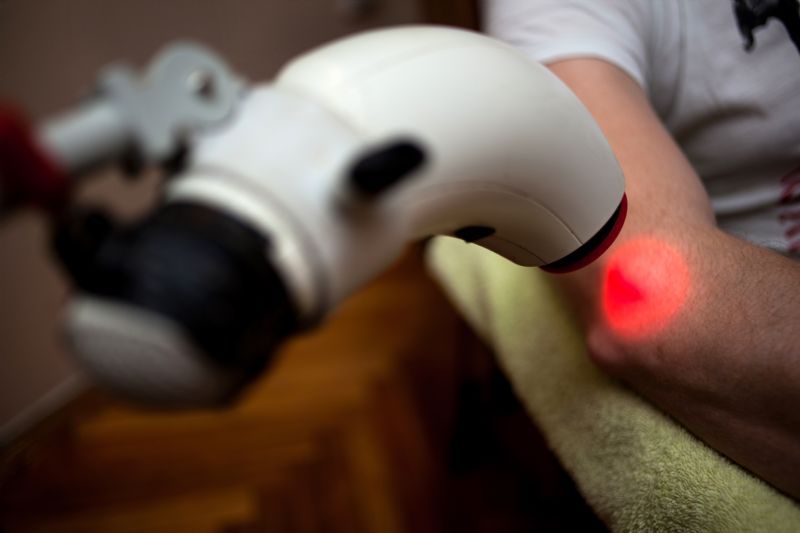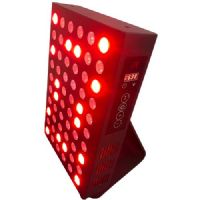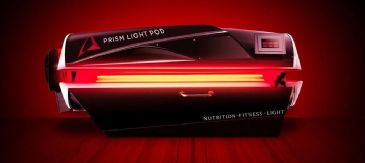 Written by Amanda Lundberg, BSN, RN
Written by Amanda Lundberg, BSN, RN
Considering that American consumers spend between $40 and $50 billion on skin care products each year, and another $40 to $50 billion is spent annually treating moderate pain - practitioners with clients who want to look and feel better can count on a strong market for services. The addition of medical-grade light therapy devices can contribute to the success of any business catering to people who want to look and feel their best.
Table of Contents |
While red light therapy (RLT) has been extensively studied, the exact mechanism isn’t fully understood. We do know that generally, exposure to penetrating low-level red light activates the mitochondria (otherwise known as the power plant of a cell). This is believed to help cells work more efficiently to repair skin and connective tissue through increased collagen production, reducing inflammation, increasing blood flow to the tissue, hasten wound healing, and boost cell growth and rejuvenation.
Medical-grade light therapy reduces markers of oxidative stress and is accepted as a treatment for tissue injury or muscle damage, skin repair, and cell rejuvenation.
Clients who seek to have the healthiest skin possible will appreciate the benefits of red light therapy that include:
For clients of gyms, physical therapists, sports therapists, and trainers, the benefits of medical-grade red light therapy include:

Light therapy, as a complementary and alternative medicine (CAM), has been widely studied, tested, and is growing in popularity. Currently, nearly 40 percent of adults in the U.S. use some form of CAM, and that number is expected to increase. This could be due to people being dissatisfied with conventional treatment (especially medications with potential side effects), seeking personal autonomy and control over self-care, and seeking more natural treatments that don’t involve pharmaceutical or surgical intervention. Red light therapy is an energy therapy that, when used as designed, doesn’t have side effects or require downtime after treatment.
Coming out of the global pandemic, people are paying more attention to their health and seeking out new ways to look and feel better from the inside out.
Although the benefits of red light therapy have been studied and touted by scientific experts, it is still not the norm to find a medical-grade red light therapy device in a salon, spa, dermatologist office, gym, or physical therapy center. Providing this service can set you apart from other service providers in your market, delivering a whole new avenue for your clients to invest in their personal well-being.

Red light therapy delivered via a panel is done while the user is sitting or standing. Panels are portable and come in different shapes and sizes designed to target one area on the body at a time. These medical-grade red light therapy devices deliver the same therapeutic benefits for skin and tissues as a red light therapy bed without taking up a large footprint.
 | Medical-Grade Red and Infrared Light Therapy Panel by Red Reactive View Product |
A user lays on a red light therapy bed for full-body LED treatment. A red light therapy bed is great for people who are suffering from skin conditions or pain in large areas of the body. It is reminiscent of a tanning bed, but there is no exposure to harmful UV rays, and it allows for treating the largest area in the shortest amount of time.
 | Prism Light Pod | Red Light Therapy Bed View Product |
Irradiance, measured in milliwatts per square centimeter, is the amount of light energy coming from a source at the point that it connects with your skin. It refers to red light's power density over a specific area, as well as the number of photons flowing through an area that can be absorbed into the cells. The higher the irradiance, the more measurable results can be achieved in the least amount of time. Irradiance is a more important factor to consider than the wattage draw or the wattage rating of the LEDs.
For deeper cellular penetration for deep tissue healing or enhancing sports performance, a power density/irradiance reading of greater than 100 mW/cm² is recommended. If using a medical-grade red light therapy device for skin health or therapy reaching not as deeply into tissues, an irradiance level of between 20 mW/cm² and 100 mW/cm² is appropriate.
Wellness-grade devices are likely less powerful, using a lower wavelength frequency than medical-grade red light therapy devices. Lower-grade devices will deliver lower-grade results. If you really want to get the most out of this therapy, select a medical-grade device. Both home users and professionals can purchase a medical-grade device without breaking the bank. Just do your research on the product!
Warranties on medical-grade red light therapy devices can widely vary. Some manufacturers offer a 1-year warranty, while other companies offer 5-year warranties. Because this is a sizeable investment for your business, it’s important to recognize that not all warranties are created equal, so be sure to review the warranty policy of any device you are considering buying. If you have any warranty questions about a RehabMart product, please reach out to us!
Different designs have different space requirements, and if you have space limitations, it could impact your purchasing decision. Red light therapy beds are the bulkiest option, taking up the most space while generally being stationary. Red light therapy panels come in different sizes and shapes and sometimes come with stands. Panels are often moveable unless they need to be mounted, and they provide more options for where they can be located.
Since red light therapy devices use LED energy-efficient lighting technology, which is also the least expensive source of light, there shouldn’t be more than a negligible impact on your power bill. You can expect that by adding medical-grade red light therapy for your clients as a paid service, the additional revenue will more than cover any change in the power bill.
Interest in red light therapy continues to rise, which will continue to make this an attractive service for clients. For a health and wellness business seeking to stay on the cutting edge, a medical-grade red light therapy device can be a great way to add a profitable service line delivering improved skin health and appearance, better sleep patterns, wound healing, connective and deep tissue restoration, muscle recovery, improved circulation, pain relief, decreased inflammation, and more.
Researching your options and conducting due diligence to determine the best option for your business will allow you to safely, effectively, and profitably deliver the many benefits of red light therapy to your clients. If you are ready to learn about the qualities to look for in a device, read Expert Explains How To Choose A Red Light Therapy Device.

Didn't find what you were looking for? Browse all Light Therapy products or our entire catalog of Therapeutic Modalities products.
Interested in learning more? Check out our free, educational resource Caregiver University. You will find incredible articles about light therapy, hyperbaric oxygen therapy, cryotherapy, and much more!
Want to get social? Find dozens of videos featuring products and tips like these on Rehabmart’s YouTube channel! And follow the RehabMart.com Facebook!

Amanda is a registered nurse with over a decade of experience in hospital, clinic, and healthcare management settings. Her primary focus has been collaborating with patients to manage disease processes. Aiming at continuing active lifestyles for her patients, Amanda has become an expert in adjunct therapies.
Amanda incorporates a holistic approach to heal the body from within. She has completed extensive research in remedial treatments using oxygen, as well as becoming a professional light therapy specialist. Her reparative ethos to health has sparked engaging conversations and teaching opportunities nationwide.
Amanda has taken her passion for articulating technical medical language and transitioned to freelance writing. She enjoys bringing a clinical voice to health and wellness brands.